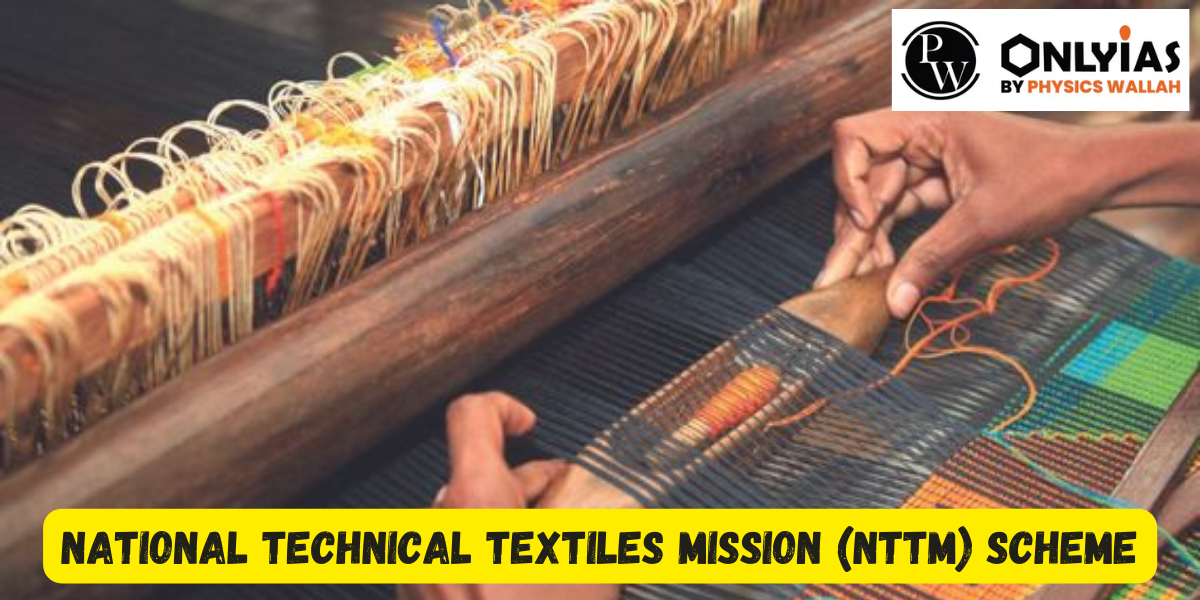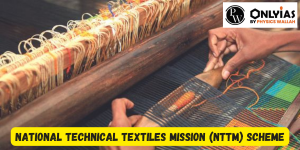This article provides an in-depth examination of the National Technical Textiles Mission (NTTM) Scheme's objectives, components, and structure.

NTTM Scheme: The Cabinet Committee on Economic Affairs (CCEA) has granted approval for the establishment of the National Technical Textiles Mission, a significant initiative aimed at positioning India as a global leader in the field of technical textiles.
This article provides an in-depth examination of the mission’s objectives, components, and structure, which are essential for government and UPSC exam aspirants to understand. Candidates must prepare comprehensively as questions related to this mission may appear in the GS 2 and GS 3 papers, addressing government policies, growth, and development issues.

To appreciate the significance of the mission, it is crucial to understand what technical textiles are:
Technical textiles are specialized textile materials and products designed primarily for their technical performance and functional properties rather than their visual or aesthetic characteristics. These textiles have diverse applications, spanning agriculture, infrastructure (roads and railways), sportswear, healthcare, and even high-end uses like bulletproof jackets and space exploration.
The primary objectives of establishing an independent mission for the development of technical textiles in India are as follows:
The mission comprises four key components:
Through this four-year plan, the Government of India intends to significantly boost the promotion and development of the Indian Technical Textiles sector, leading to economic growth for the country.
| Also Read | |
| National Digital Health Mission | Solar Charkha Mission |
| Mission Karmayogi | Atmanirbhar Bharat Abhiyaan |
| Must Read | |
| NCERT Notes For UPSC | UPSC Daily Current Affairs |
| UPSC Blogs | UPSC Daily Editorials |
| Daily Current Affairs Quiz | Daily Main Answer Writing |
| UPSC Mains Previous Year Papers | UPSC Test Series 2024 |
The objective of the mission is to elevate India to a prominent role as a global leader in Technical Textiles, striving to boost the domestic market size from USD 40 billion to USD 50 billion by the year 2024.
Manufacturing projects that produce eligible products in the realm of Technical Textiles, MMF yarn sourced from recycled materials, or MMF Fabric are eligible to receive a unique Capital Subsidy. This subsidy amounts to 15% of the Estimated Fixed Assets (EFA) disbursed in equal annual instalments over a span of 10 years.
The full form of NTTM is National Technical Textiles Mission.
Union Minister of State for Textiles, Smt. Darshana Jardosh, conveyed in written communication today that the allocation for the Textiles Sector in the Budget 2023-24 amounts to Rs. 4,389.34 crore.
In 2020, the Cabinet Committee on Economic Affairs (CCEA) granted approval for the scheme with a total outlay of Rs. 1480 Crore. The implementation period spans four years, covering the fiscal years 2020-21 to 2023-24.

<div class="new-fform">
</div>